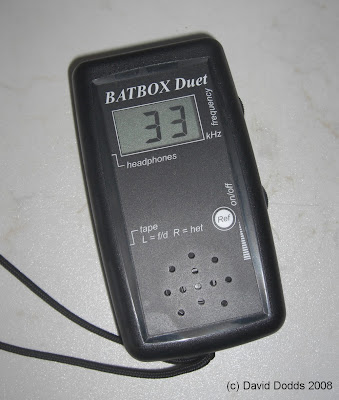If John Donne had been an ecologist, rather than a form of suffering for High School English students, he might have said "No bat is an island". That's an appalling piece of paraphrasing and as I write it I find myself glancing over my shoulder, in fear of an avenging teacher. However, my point is this: as bat ecologists it is very easy to become entirely focussed on "our" species and lose sight of their place within the ecosystem.
With that in mind (and because the bats are far from active at present) I present a small diversion from the world of bats, into the world of bryology: the study of mosses and liverworts. Where's the relevance? Woodland is probably the most important habitat for bats and a key part of woodland structure are the mosses and liverworts. In some British woodlands they outweigh vascular plants in terms of biomass and they form an important habitat for many invertebrates which may ultimately become bat-food. Also, I like them and it's my blog.
With over 1,100 species of bryophyte in Britain, some hard to identify, there are limits to what a casual naturalist can achieve, but to show that this is no excuse, here's my guide to five common woodland mosses everyone should be able to identify, even without a hand-lens. Just to prove my point, they were all photographed in my local (rather poor) woodland this afternoon, whilst walking the dogs.
Rhytidiadelphus squarrosus (Right-id-aye-ah-dell-fuss squaw-row-suss)If you're a keen gardener you probably know this moss already. It's common name is
Lawn Moss, for good reasons. In woods and lawns it often forms dense carpets and is very easy to identify: pull up a bit and you'll see it has a bright red stem and green leaves, which are squarrose: they emerge from the stem and bend downwards.
 Thuidium tamariscinum (thoo-id-ee-um tam-ah-riss-eye-num)
Thuidium tamariscinum (thoo-id-ee-um tam-ah-riss-eye-num)My personal favourite, this plant is very easy to identify. It is regularly tripinnate, meaning that the stem is symmetrical, with each branch off the stem divided into sub-branches, which are themselves further branched. In other words, it looks like a miniature fern. The stems are always green or black (if red, you've got
Hylocomium splendens) and quite springy, so the little fern-like stems often arch over, like a bramble. It's common name is
Tamarisk Moss. Dicranum scoparium (die-crane-um scop-ah-re-um)
Dicranum scoparium (die-crane-um scop-ah-re-um)This is an upright moss, often forming dense tufts. The giveaways are the long, thin, pointed leaves, often densely packed together and turning to one side. It's common name is
Fork Moss. Sclerapodium purum (scleh-rah-podium poo-rum)
Sclerapodium purum (scleh-rah-podium poo-rum)The leaves of this moss lay along the stems and branches, tightly overlapping, giving them a bloated, fat look, with blunt tips. This feature gives it it's common name:
Neat Moss. It's regularly pinnate, so the branches are roughly the same on each side of the stem and they aren't sub-branched. It should have a green stem, if it's red you may be looking at
Pleurozium schreberi.  Plageothecium undulatum (play-gee-oh-thee-see-um un-dew-lah-tum)
Plageothecium undulatum (play-gee-oh-thee-see-um un-dew-lah-tum)This is a very easy moss to identify. It forms loose mats of pale green, flattened stems, usually unbranched. If you look very closely at the leaves they are undulate: in other words, wavy from end to end. Hence the common name:
Wavy Flat-moss.
Having got that out of my system I can go back to talking about bats...
There is unfortunately no good field guide to mosses and liverworts currently available. However, the British Bryological Society are working to rectify that. You can view the whole of their new field guide on-line (but be aware it's a work in progress): http://hosting.sleath.co.uk/bbs/
In the meantime, Carol Crawford has published a very nice guide to common woodland mosses, and it's not expensive (£6.50): Carol L. Crawford (2002) "Bryophytes of Native Woods" (3rd ed.) Natural Resource Consultancy ISBN: 0-9543795-0-0
Many thanks to Nick Hodgetts, David Chamberlain, Alex Lockton and Sarah Whild, without whom I'd still be asking "what's that little green squishy plant?" Incidentally "Right diddly-wotsit squirrelly" was my daughter's exasperated response when I tried to teach her some bryophytes...
Keep up to date with the latest posts Facebook.com/Davidsbatblog
 (Two Natterer's Bats hibernating in a cave roof crevice )
(Two Natterer's Bats hibernating in a cave roof crevice )












